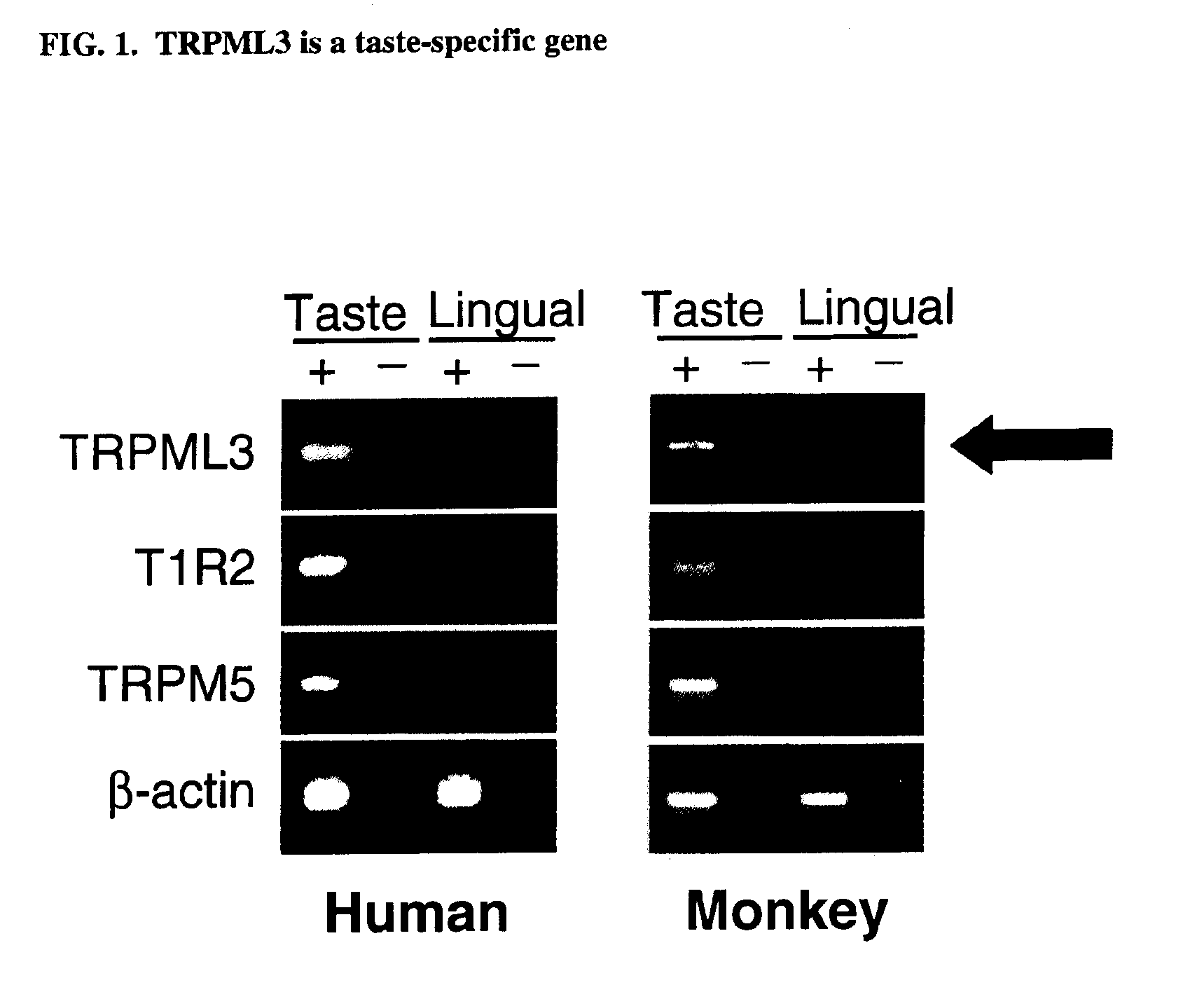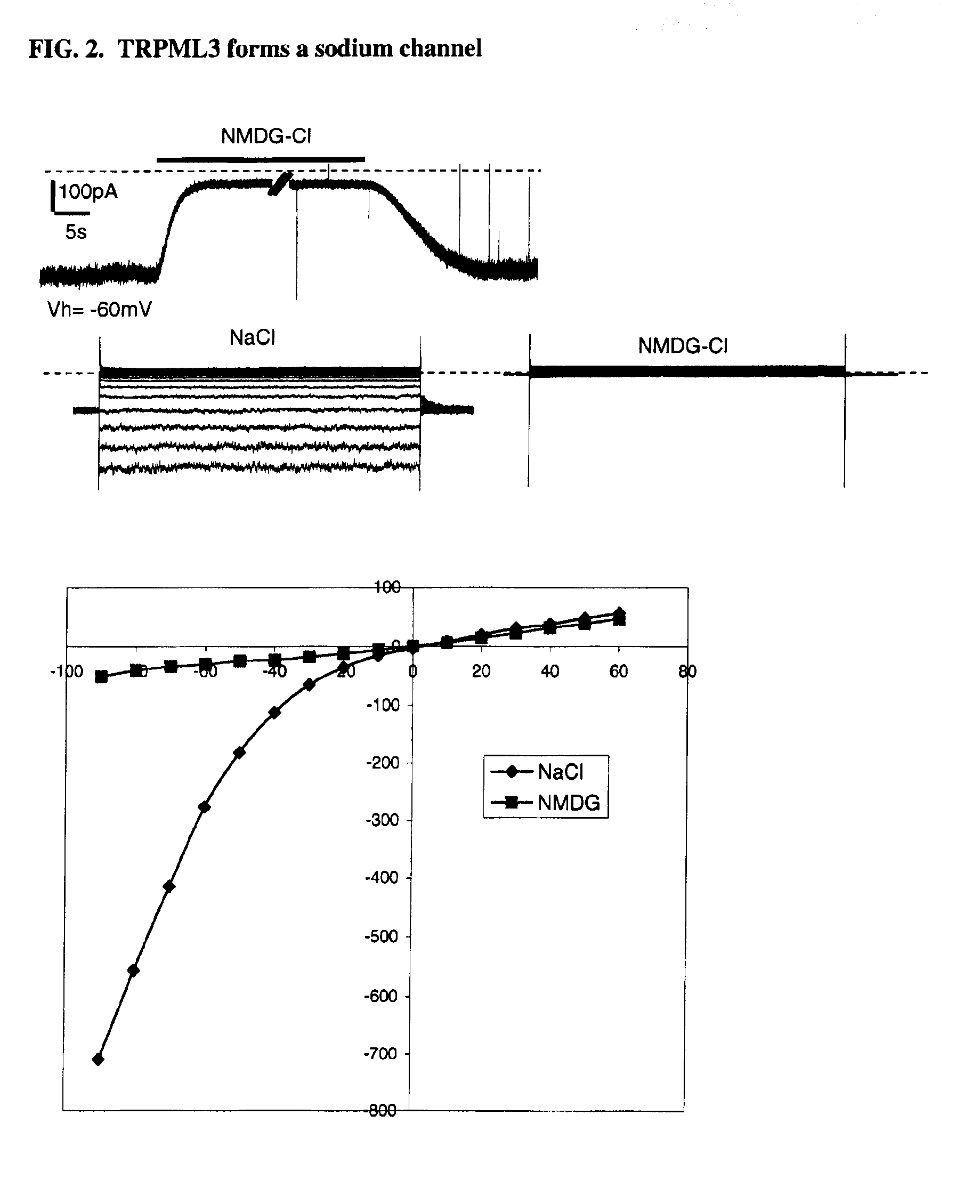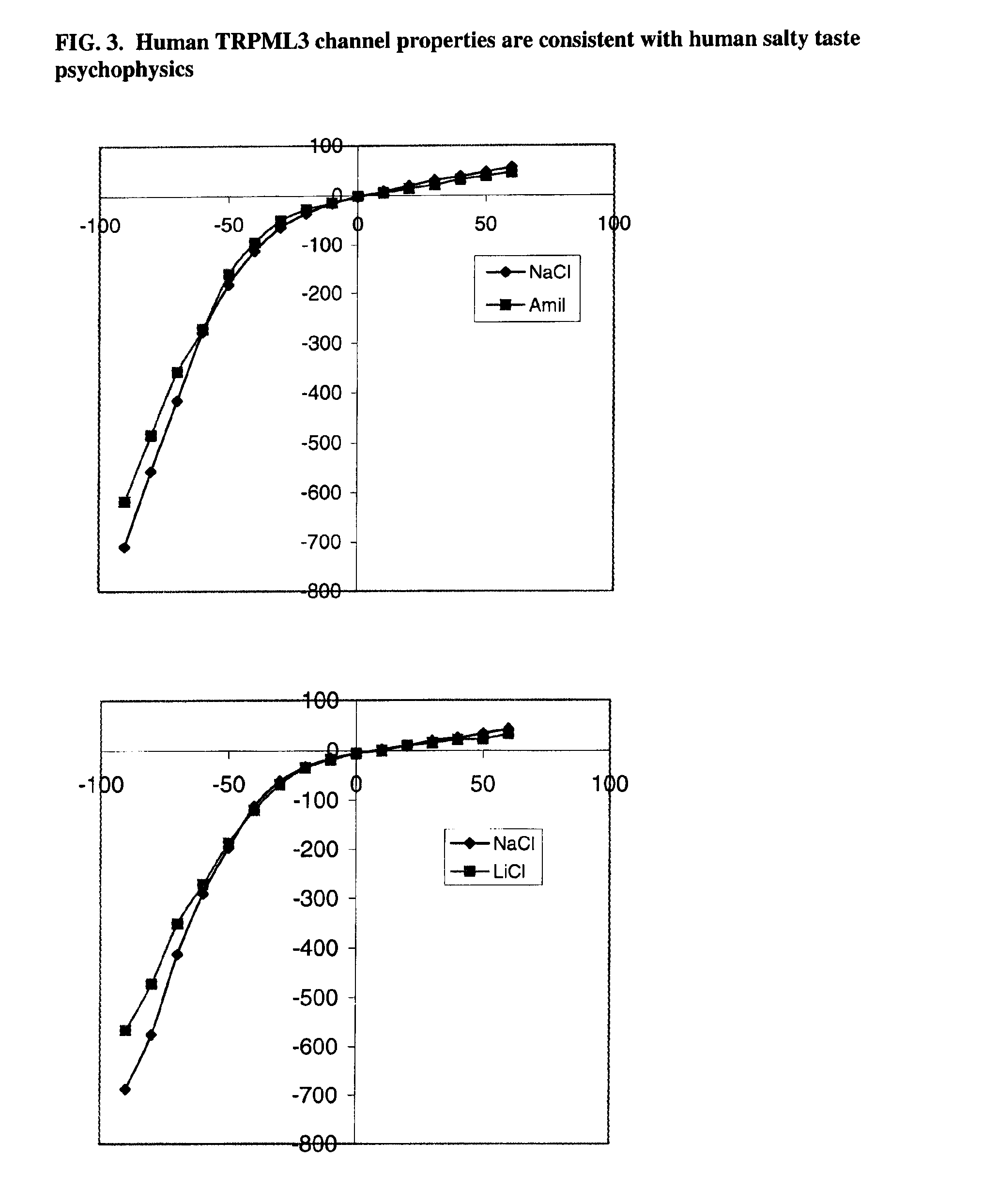Identification of TRPML3 (MCOLN3) as a salty taste receptor and use in assays for identifying taste (salty) modulators and/or therapeutics that modulate sodium transport, absorption or excretion and/or aldosterone, and/or vasopressin production or release
rpml3 technology, applied in the field of identification of trpml3 (mcoln3) as a salty taste receptor, can solve the problems of mass cell death and melanocyte death, and achieve the effect of enhancing or inhibiting the sodium transport
- Summary
- Abstract
- Description
- Claims
- Application Information
AI Technical Summary
Benefits of technology
Problems solved by technology
Method used
Image
Examples
example 1
[0510]This example relates to the experiments and molecular biology data which are contained in FIG. 1 that show that TRPML3 is a taste-specific gene. RT-PCR of human (left) and monkey (right) taste buds (taste) and lingual epithelial cells (lingual) collected by laser capture microdissection was affected. FIG. 1 shows that TRPML3 is only expressed in taste cells, similar to the known taste-specific genes T1R2 and TRPM5. The Figure also shows that the housekeeping gene beta-actin is expressed in both taste and lingual cells demonstrating that RNA from both samples is of high quality. ‘+’ indicates reverse transcription was performed and ‘−’ indicates that no reverse transcription was performed (negative control). Bands are only observed with reverse transcription. All bands were cloned and sequenced to confirm gene identities.
example 2
[0511]This example contains the electrophysiological assays contained in FIG. 2 which reveal that TRPML3 forms a sodium channel. Whole cell patch clamp electrophysiology of cells expressing human TRPML3 was affected as depicted therein. It can be seen that TRPML3 generates a sodium leak current that is blocked upon removal of sodium and replacement with the large impermeant cation NMDG. The top trace in the same Figure shows current at a holding potential of −60 mV. The middle traces in FIG. 2 show current-voltage traces from −100 mV to +60 mV in the presence (NaCl) and absence (NMDG-Cl) of sodium. The bottom graph in the Figure shows current voltage curves in the presence (dark blue line; diamonds) and absence (magenta line; squares) of sodium. It can be seen that TRPML3 exhibits inward rectification (more current at negative voltages compared to positive voltages).
example 3
[0512]This example relates to the electrophysiological assays the results of which are contained in FIG. 3. These results obtained using the human TRPML3 channel properties are consistent with human salty taste psychophysics. The top graph in the Figure contains current-voltage curves showing TRPML3 sodium conductance (dark blue line; diamonds) is not blocked by 30 uM amiloride (magenta line; squares). Both human salty taste and TRPML3 are not blocked by amiloride. The bottom graph in the same figure contains current-voltage curves showing TRPML3 is equally permeable to the salty cations sodium (dark blue line; diamonds) and lithium (magenta line; squares). This is consistent with TRPML3 encoding a human salty taste receptor since sodium and lithium are equally salty to humans and both cations permeate the human TRPML3 channel.
PUM
| Property | Measurement | Unit |
|---|---|---|
| voltages | aaaaa | aaaaa |
| current | aaaaa | aaaaa |
| molecular weight | aaaaa | aaaaa |
Abstract
Description
Claims
Application Information
 Login to View More
Login to View More - R&D
- Intellectual Property
- Life Sciences
- Materials
- Tech Scout
- Unparalleled Data Quality
- Higher Quality Content
- 60% Fewer Hallucinations
Browse by: Latest US Patents, China's latest patents, Technical Efficacy Thesaurus, Application Domain, Technology Topic, Popular Technical Reports.
© 2025 PatSnap. All rights reserved.Legal|Privacy policy|Modern Slavery Act Transparency Statement|Sitemap|About US| Contact US: help@patsnap.com



